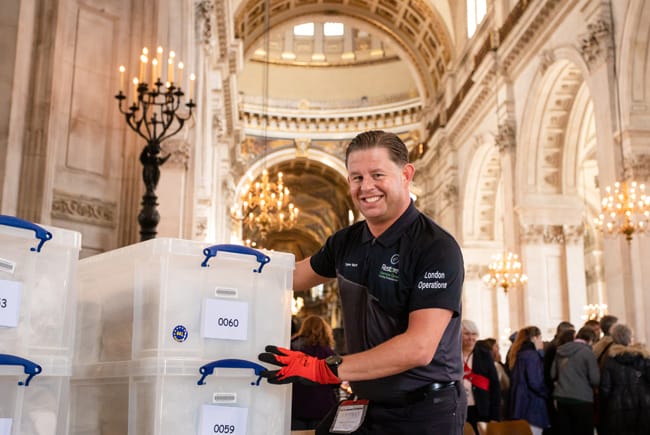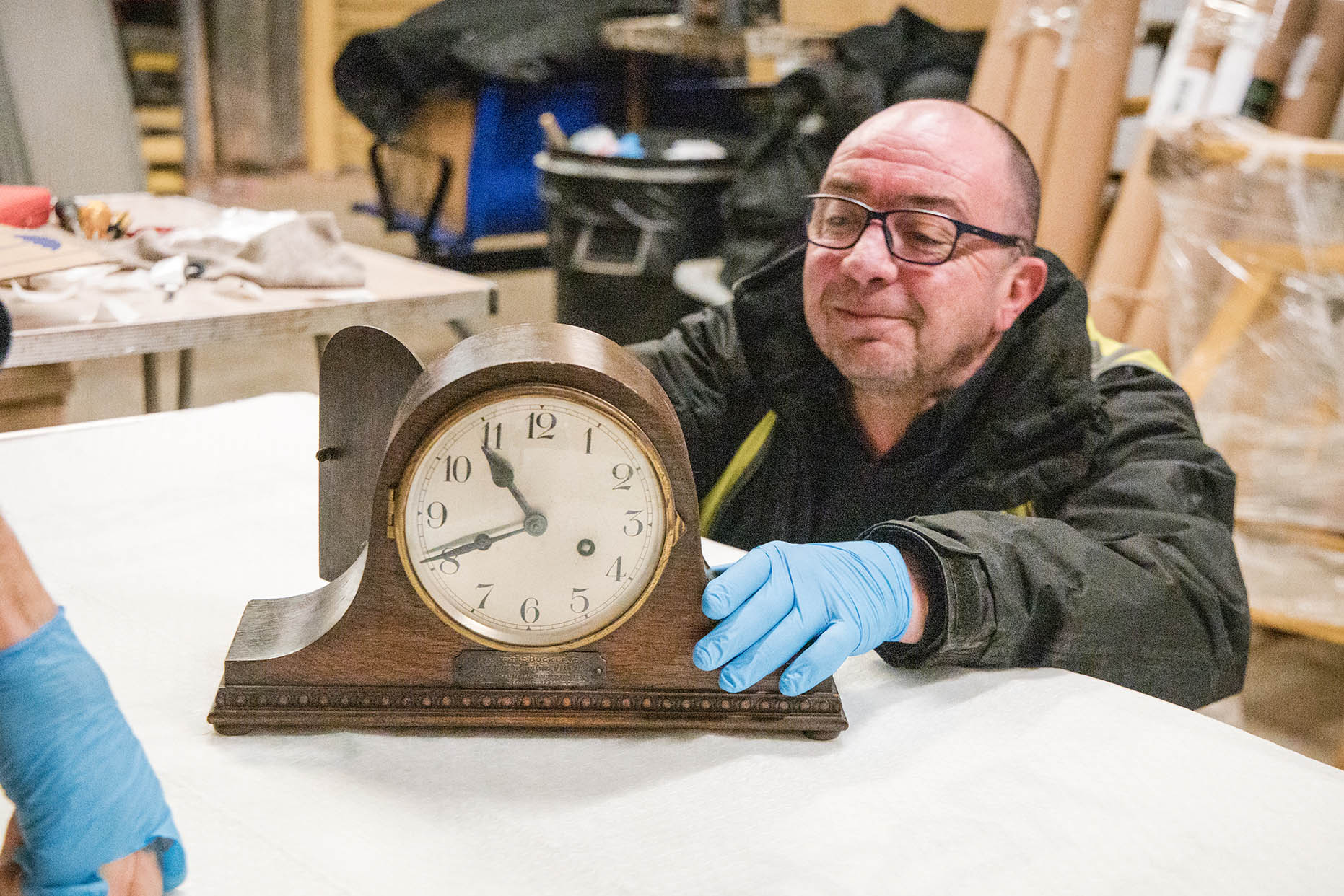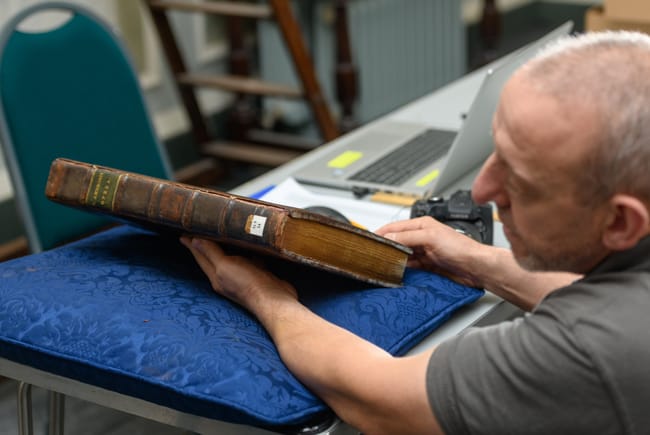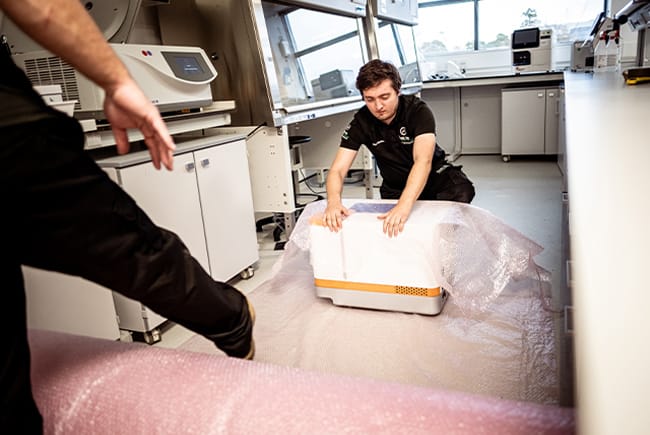When walking through a museum gallery, what you see is usually just the tip of the iceberg. Behind the scenes is a vast network of conservation, categorisation, and care. For museums, archives, and heritage institutions, properly storing collections is just as important as showcasing them. Without expert storage practices, the objects we cherish might not survive to be appreciated by future generations.
Whether you’re preserving ancient artefacts, fragile textiles, or large-scale artworks, understanding best practices in museum storage is essential. That’s why we’ve put together these guidelines on what good storage looks like, how to plan for it, and why Restore Harrow Green has become a trusted partner to museums across the UK.
Understanding museum storage standards
Every museum collection – be it paintings, artefacts, books, or instruments – has its own unique standards. Each of these categories requires different, methodical approaches. Through the decades, these principles and standards have been adopted and updated as needed. The Institute of Conservation provides a comprehensive list of the applicable international codes and standards.

Paintings and paper-based works
Of all the categories, these are particularly sensitive to light, temperature, and humidity. To minimise or eliminate exposure to UV light, they must be stored in climate-controlled environments. For example, entities like the National Park Service recommend maintaining relative humidity (RH) levels between 45% and 55% and temperatures around 18–21°C (64–70°F) to prevent damage or deterioration.
Restore Harrow Green employs acid-free tissue, Tyvek® wrapping, and custom-made crates with shock-absorbing interiors that protect items during transit and ensure long-term conservation.

Three-dimensional artefacts
This encompasses a wide range of objects, from sculptures to scientific instruments, and often features mixed materials (like wood, metal, or ceramics) that respond differently to certain environmental conditions. The recommended packing techniques involve Plastazote® foam and specially treated wooden cases to prevent pests or microbial growth. For example, when we moved antique musical instruments for the Royal College of Music Museum, they were individually cradled in foam-lined and copper-riveted boxes to prevent warping.

Textiles and organic materials
This category covers delicate objects like tapestries, tribal masks, or feathered headdresses. Often susceptible to pests, they require stable humidity and careful isolation. Museum and conservation bodies emphasise the importance of maintaining consistent environmental conditions and recommend using inert, acid-free materials for storage. This means stable materials that have a pH of 7 (neutral) or higher (alkaline). As with other methods of storage, materials like polythene foams such as Plastazote and Ethafoam are recommended.
In the case of the Horniman Museum, Restore Harrow Green housed a moose’s head and a tarpon alongside centuries-old garments. Each item is monitored and stored according to strict conservation standards like BS EN 16893:2018.

Books and archives
Handling rare books is an incredibly precise and delicate task. Staff must use powder-free gloves and wrap items in acid-free tissue paper. Volumes with brittle spines should be laid flat, not upright, and packed using custom and acid-free folders.
Organisations like the International Federation of Library Associations and Institutions advise that archival materials be stored in buffered or unbuffered enclosures, depending on the item’s composition, to prevent acid migration and deterioration.
Steps for crafting a museum storage plan

Every object has its own story and storage requirements. Firstly, a successful museum storage plan starts with a full audit. For example, at Restore Harrow Green, we always begin projects with a site survey, working directly with the curators to document everything from environmental risks to logistics and accessibility issues. This also requires a checklist so that everyone adheres to the same standards, as outlined by organisations such as Museum Development England in the UK and the National Park Service in the US. It forms part of both an initial assessment and a plan for movement or storage.

Having deadlines and defined outcomes is essential, whether the goal is to refurbish a museum space or keep track of off-site holdings. When moving the Soyuz space capsule into the National Museum Cardiff, Restore Harrow Green had to coordinate around a high-profile exhibition launch date while navigating an array of particularly challenging requirements.

From fireproofing and pest control to seismic stability and flood resistance, the ideal storage space should anticipate and mitigate risks. The NPS recommends implementing integrated pest management (IPM) programs and equipping storage areas with appropriate fire detection and suppression systems. Restore Harrow Green’s Upper Heyford site, housed in former Cold War aircraft hangars, is bombproof, fireproof, and located above flood plains – just one of the reasons we’re endorsed by the National Conservation Service.

Collections aren’t static. They’re studied, loaned, restored, and reclassified, which means they need to be easily accessed and accounted for. That’s where a tracking system comes in – Restore Harrow Green integrates a barcode system and 24-hour web-based catalogue, enabling curators to retrieve items down to a single barcode, even while in transit.

Collections expand. Donors give, exhibitions evolve, and archives multiply. A robust storage plan must be scalable, something Restore Harrow Green’s modular, climate-controlled suites readily accommodate.
A trusted partner for heritage storage and relocation
When it comes to items as unique, rare and delicate as those in museums and heritage storage, you don’t want to leave anything to chance. With decades of experience and a client list that includes the Royal College of Music, the Horniman Museum, and National Museum Cardiff, we pride ourselves on not simply being movers, but heritage preservation specialists.
Our Heritage Storage Scheme is the only one recommended by the National Conservation Service. Here’s why:
- Purpose-built Storage: Based in converted Cold War hangars at Upper Heyford, our storage facilities meet the BS EN 16893:2018 conservation standard and offer atmospherically controlled environments tailored for even the most fragile artefacts.
- Expert teams: Our staff are trained in handling everything from Elizabethan manuscripts to ethnographic carvings. Continuous training ensures every move, from packing to transport, is executed with care and expertise.
- Customised handling and packing: Using museum-grade materials and bespoke cases, we ensure every object, no matter how complex or delicate, is secure during both storage and transport.
- Transparent tracking: Clients benefit from a real-time web interface to monitor collections. Each object’s location and movement history are meticulously logged.
- On-site conservation support: Dedicated suites at Upper Heyford allow curators to carry out conservation work without needing to transport artefacts off-site, an invaluable feature for sensitive items.

Caring for collections means planning for the long term
Great museum storage begins with understanding the objects, the environment, and the long-term goals of the institution. While storage might be behind the scenes, its impact is centre stage: it protects cultural heritage, supports research and ensures that future generations can experience history first-hand.
If you’re currently rethinking your museum storage plan or starting one from scratch, Restore Harrow Green is here to help. From site surveys and bespoke packing to climate-controlled storage and real-time inventory management, we’re ready to be your heritage partner every step of the way.
 Customer Login
Customer Login